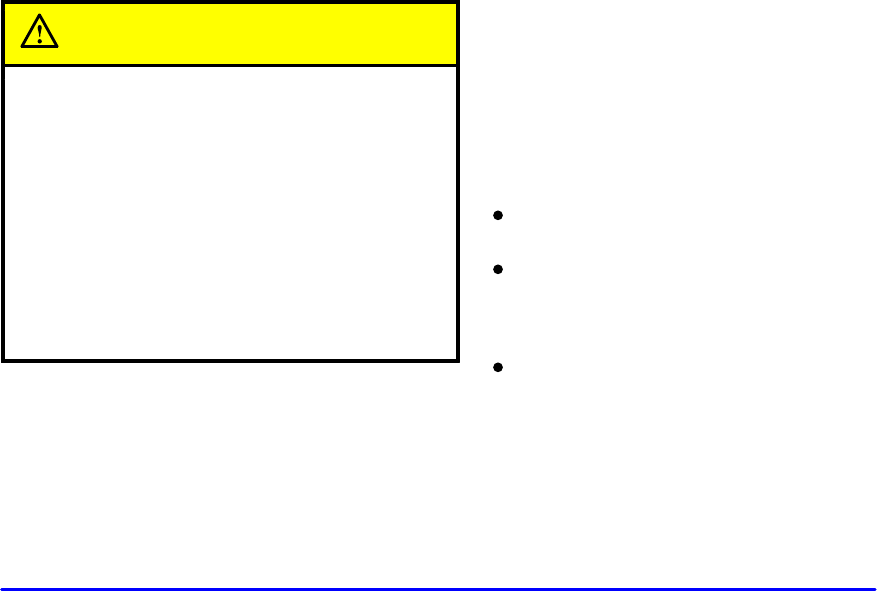
2-73
Luggage Carrier (Option)
CAUTION:
If you try to carry something on top of your
vehicle that is longer or wider than the luggage
carrier
-- like paneling, plywood, a mattress, and
so forth
-- the wind can catch it as you drive
along. This can cause you to lose control. What
you are carrying could be violently torn off, and
this could cause you or other drivers to have a
collision, and of course damage your vehicle. You
may be able to carry something like this inside.
But, never carry something longer or wider than
the luggage carrier on top of your vehicle.
The luggage carrier has slats, side rails and crossrails
attached to the roof to secure cargo. The adjustable tie
downs, at both ends of the crossrails, should be used to
secure loads to the luggage carrier.
Use GM accessory racks that are compatible with your
luggage carrier for transporting sports equipment. These
are available through your dealer.
You can adjust the crossrails to handle loads of various
sizes. Just loosen the slider knobs at each end of the
crossrail and move them to where you want them. Make
sure both sides of the crossrails are even, then tighten
the slider knobs.
Be sure the cargo is properly loaded. Follow these
guidelines:
Carrying small, heavy loads on the roof is not
recommended.
Secure the load using the tie downs at both ends
of the crossrails. When loading cargo directly on
the roof panel, use the crossrails to keep the load
from shifting.
If you need to carry long items, move the crossrails
as far apart as possible. Tie the load to the tie downs
provided. Also tie the load to the bumpers. Do not tie
the load so tightly that the crossrails or side rails are
damaged.


















